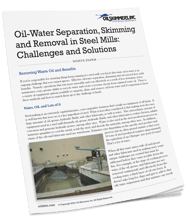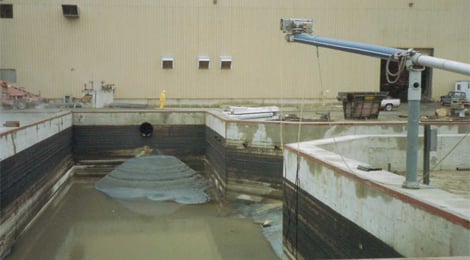 Waterborne oil is an ongoing consideration. Effectively removing oil from water not only helps your plant run better overall – it makes good business sense. And, it can pay off in many ways.
Waterborne oil is an ongoing consideration. Effectively removing oil from water not only helps your plant run better overall – it makes good business sense. And, it can pay off in many ways.
The steel manufacturing environment poses its own unique set of challenges to oil removal. It’s a high-capital, continuous process that’s tough on equipment and uses large amounts of water. Oil collection tanks and pumps that are integrated with typical industrial wastewater systems make sense in certain applications, but they have notable drawbacks in steel mills. Complications can happen with down-the-line oil separation.
- Preventing oil from deteriorating your coolant fluid reduces your water consumption and also trims wastewater treatment fees.
- Keeping lubricant and hydraulic fluid residues from collecting on production machinery and filtration systems – and even the product itself – avoids expensive repairs, costly production delays and rework.
- Capturing tramp oil before it takes up residence inside your cooling towers reduces plant maintenance costs.
- Removing oil before it can contaminate water in pressurization test pits extends the life of the water, avoids flawed test results and protects delicate sensors from damage.
In the white paper:
- Remove Oil, Reduce Costs
- Remove the Oil Before it Causes Trouble
- The Right Oil Removal Equipment Gets Results
- Oil Skimmer Basics
- Conserve Water, Save Money
- Reclaim Oil, Generate Revenue with Tube Skimmers

For more information, visit OilSkim.com,
or call us at 440-237-4600
 Waterborne oil is an ongoing consideration. Effectively removing oil from water not only helps your plant run better overall – it makes good business sense. And, it can pay off in many ways.
Waterborne oil is an ongoing consideration. Effectively removing oil from water not only helps your plant run better overall – it makes good business sense. And, it can pay off in many ways.